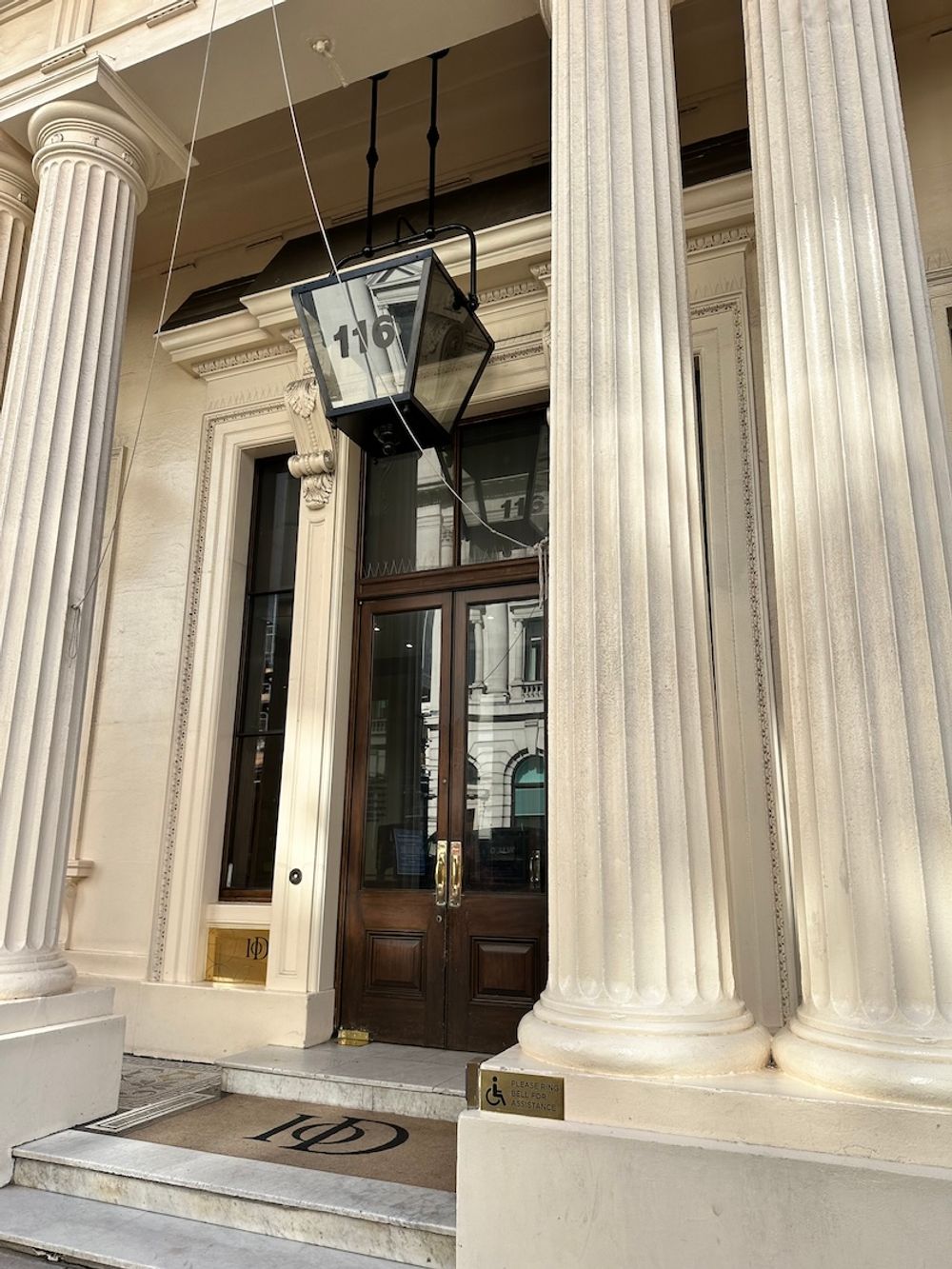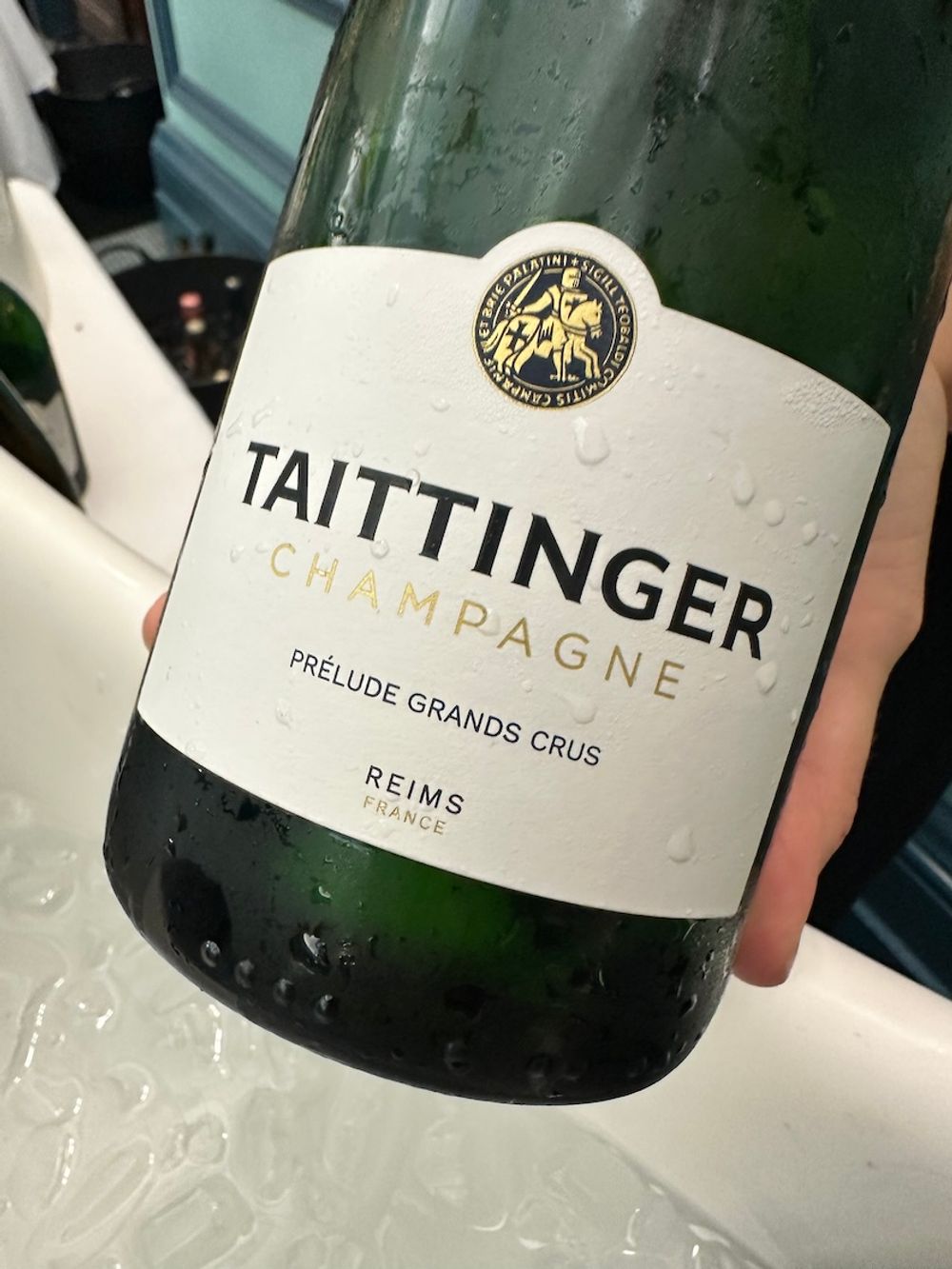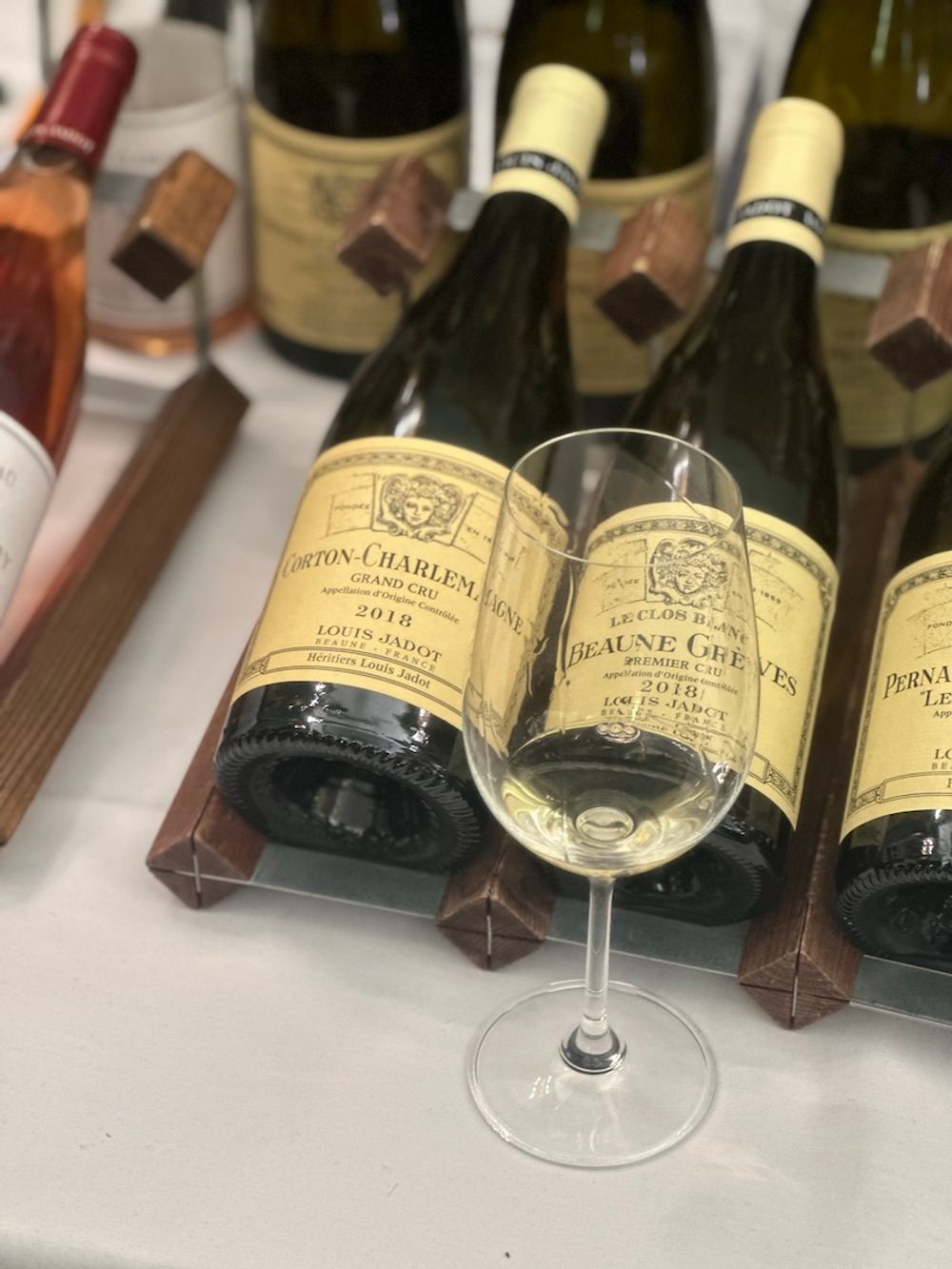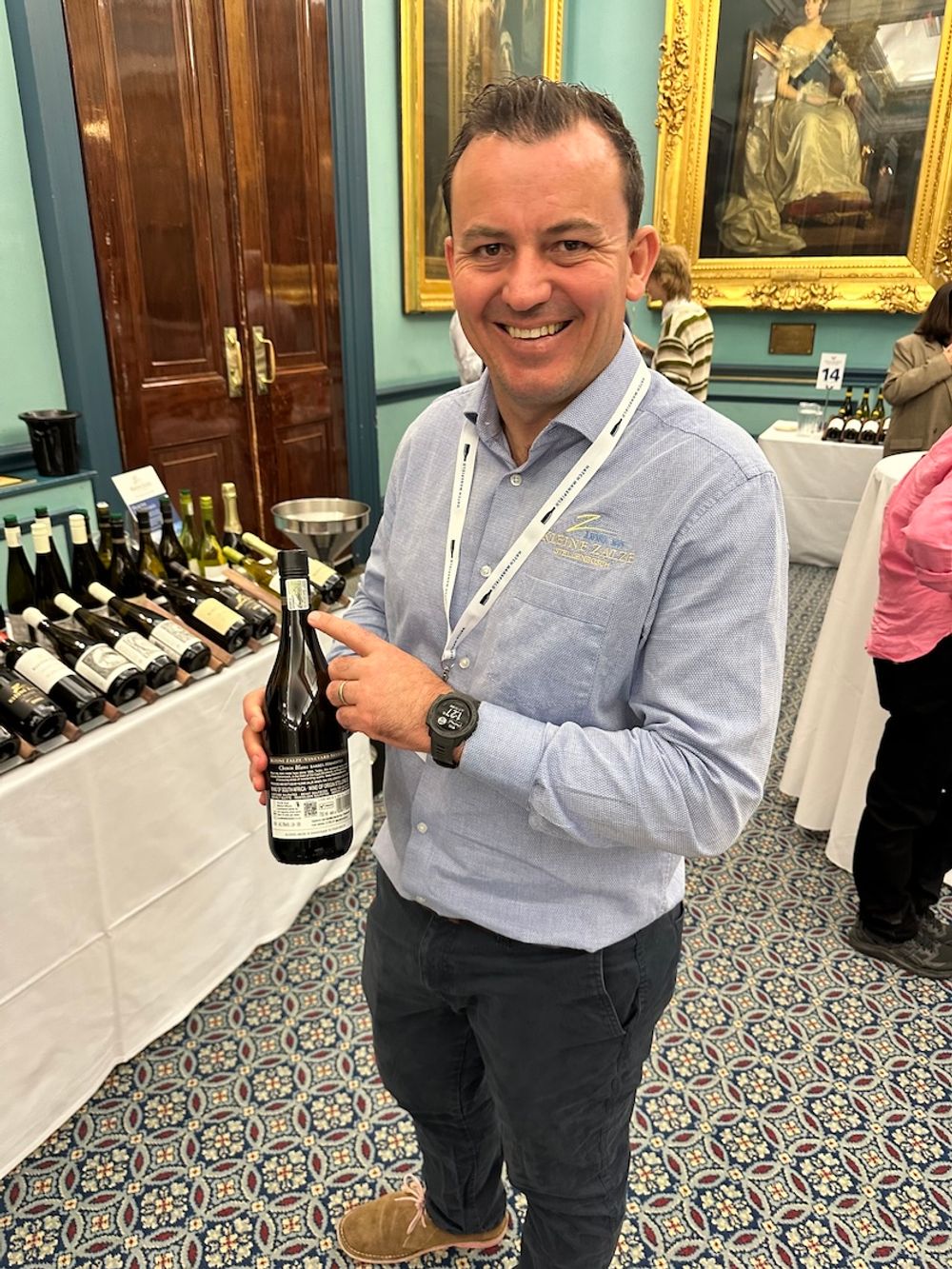There is arguably not a lot to celebrate in the UK wine sector right now. Brexit’s continuing fallout, the pandemic’s long shadow, supply challenges compounded by last summer’s duty rises, with a further bureaucratic nightmare still threatened. The backdrop might have been grim, but the mood was still upbeat at an autumn portfolio tasting celebrating 30 years of Hatch Mansfield.

Hatch Mansfield 30th anniversary tasting, Institute of Directors, September 16, 20224
“It’s probably the hardest it has been in living memory, to be honest… I think it is more uncertain than 2008 or even the early days of Covid,” admits managing director Ben Knollys, as he urges the nascent Labour government to rethink the Tories’ plans to tier alcohol duty by bands of 0.5% ABV. While praising the work being undertaken by the WSTA to lobby the incoming team at the Treasury, he wars time is running out.
“The number one goal has to be making the ‘duty easement’ permanent … it will be an absolute nightmare if that goes, a disaster. When duty went up last August, HMRC actually took in less revenue than they did before, because it had such a massive impact on the price of a bottle of wine, the biggest duty hike since the 1970s putting between 50p and a pound on the shelf edge price. As a result, a bottle is just under a fiver before you have even added the wine,” says Knollys.
Amid the soul-destroying work of preparing for the worst case scenario – Labour pushes ahead with the plans as originally proposed – Knollys and his team have at least had the happier task of plotting evolutionary changes to a portfolio that has been remarkably constant over the years.
“We have the luxury of being able to be really choosy with our portfolio, the producers scarcely changing, new additions relatively rare, the focus has always been on the long term.”
The history boys
Though its name – inherited from a London wholesaler, a division of Grants of St James’s – has been synonymous with wine since the early 19th century, Hatch Mansfield has been trading in its present form for a mere three decades, with an operating model that’s become its raison d’être: it does not sell directly to the on-trade, preferring to deal with others who might otherwise be rivals.
“A lot of our competitors need to have a couple of hundred suppliers, where we work with 13 families around the world across 22 brands, and that really enables us to give true focus to them. If you supply us, you are really an extension of the family,” says Knollys.“What this allows us to do is to add value through the chain, with our distributors, so we end up with hundreds of sales people out there selling our wines.”
It is a strategy decided back in 1994 by pioneering founders, Pierre Henry Gagey of Louis Jadot, Errazuriz owner Eduardo Chadwick, and Villa Maria founder, Sir George Fistonich, who sought a new model for the representation of their wines.
“From day one we wanted to have a small number of premium, independent, producers, capable of growing scale, and strong across all sectors. The Hatch team would have an in-depth knowledge of their businesses and we would therefore be seen as their UK arm, giving the wineries more control of their destiny,” says CEO and founder Patrick McGrath MW, who was there at the beginning and attributes the company’s subsequent success to “focus, focus, focus.”
A celebratory masterclass

Patrick McGrath, Hatch Mansfield CEO and founder, kicks off proceedings with a superb masterclass
In recognition of its anniversary, the portfolio tasting began with a masterclass from McGrath, supported by Louis Jadot’s export director, David Stephan, and Pepa Chadwick, a scion of the Chadwick family, now a regional sales manager at Hatch Mansfield. Six library wines featured, starting with two whites: Errazuriz Las Pizarras 2014, a delicious coastal Chardonnay from Aconcagua, notable for its sleek salinity, which offered both a sense of place and some perceptible (cork aged) evolution and Villa Maria Keltern Chardonnay 2012, an often underrated, top flight example from Hawke’s Bay, plush, buttery and stylish in character, the generous stone fruit and grilled pineapple balanced by juicy citrus acidity, its remarkable freshness no doubt connected to the screwcap closure.
Louis Jadot showcased two reds, representing both its past and more recent history:Château des Jacques Moulin-à-Vent 2004, the result of Jadot’s expansion into arguably the finest Beaujolais Cru, offered an intricate red fruit nose, lifted by floral notes and a pinch of pink peppercorn, charcuterie on the palate, with some gentle evolution. A complex wine, it underlined Gamay’s ability to age with grace. “It used to be a real struggle to sell the Crus, but that has completely changed now, with the wines rightly being recognised for their ageing potential,” McGrath observed.
Louis Jadot Clos Vougeot Grand Cru 1994 from magnum, provided the highlight of the masterclass for me, its ethereal berry-fruited nose, perfumed with fresh rose petals and pot pourri, offering beautiful fruit complexity, with a savoury undertow of fennel tea and bresaola, the finish thought provoking and the 12.5% alcohol perhaps a reflection of days of yore.
Next, a duo of ‘New World’ reds, offered something completely different: Don Maximiano Founder’s Reserve 2008, the flagship wine named after the founding father of Errazuriz, a blend of Cabernet Sauvignon, Carménère and Shiraz, intense and brooding, with toasty oak and sweet spice, its rich fruit intensity both providing a route map to its future ageing potential and conjuring thoughts, in my mind at least, of fine fillet steak.
Finally, Villa Maria Ngakirikiri 2013, a top flight Bordeaux blend from Hawke’s Bay’s Gimblett Gravels, with beguiling notes of Victoria plum, foraged blackberry and pencil lead and a frisson of festive spice, balanced by a cool, red fruit complexity. McGrath pointed out that Villa Maria, under Fistonich’s leadership, was one of the first wineries to plant on the Gravels.
An evolving portfolio

Founded in 1734, one of the few Grande Marques remaining family-owned and managed, Champagne Taittinger is a jewel in the Hatch Mansfield crown, with Knollys praising a shared “long term, balanced approach” at the house.
With eight wines on show, including a long-term personal favourite, Taittinger Brut Reserve (RRP £57), and the intriguingly vinous, plump and creamy, Taittinger Folies de la Marquetterie NV (£83) from estate fruit which sees some oak for textural complexity, I was delighted to find something new (to me at least), Taittinger Prélude Grands Crus NV (RRP £77), an equal blend of Grand Cru Chardonnay and Pinot Noir notable for its vibrancy, elegance and impressive purity of fruit.
Sitting atop the impressive range, Taittinger Comtes de Champagne Blanc de Blancs Brut 2013 (RRP £121) was a feast of aromatic complexity, combining enticing autolytic charm with a remarkable freshness, upfront and giving yet serious and pensive, with a seemingly bottomless pit of fruit intensity, perfectly weighted, with a subtle mineral undertow and long, elegant, Breton biscuit finish. A classy cuvée, there are rivals that cost more and offer less.

With its ‘founder status’, Maison Louis Jadot is, of course, another jewel. Among my tasting highlights: a pithy, precise, stone-fruited Pernand-Vergelesses Blanc Les Combottes 2021 (RRP £48), which offers good value in the context of today’s Burgundy, a Pernard-Vergelesses 1er Cru Clos de la Croix de Pierre Rouge 2017 (RRP £38)from a relatively soft vintage, approachable, with a gamey nose, sleek red fruit and smooth, compelling texture, and, to cap it all, a stunning Corton Charlemagne Grand Cru 2018 (RRP £238) that reminded me how much a glass of great Burgundy offers that comforting sense of coming home (if you live in a palace), with its lavish, focused fruit, perfect poise and intricate, ethereal complexity.
Australia was well represented, as it tends to be when Larry Cherobino is involved.Though he was in town, he was sadly unwell and unable to attend, but Cherubino Wines – his eponymous range and those he oversees for Robert Oatley – did the talking, with a little help from Knollys:
“Larry Cherobino is a real character, so passionate about what he does, he is an instinctively brilliant winemaker, dynamic in being able to do the job that he does for Robert Oatley whilst also running his own very successful show. He does an amazing job in juggling all the things that he does.”

That juggling includes: UOVO Riesling 2023 (RRP £23), from Frankland River, Western Australia, with its gentle, enticing aromatic complexity and dialled back, pillowy textural purity, the result of fermentation in concrete egg, as the name suggests. Though Margaret River is most famous for the unlikely double act of Chardonnay and Cabernet Sauvignon, its white Bordeaux blends are worthy of equal billing. Pedestal Semillon Sauvignon Blanc 2023 (RRP £18) has zesty citrus with herbal nuances and a lovely sense of precision and purity. My favourite: Cherubino Pemberton Chardonnay 2022 (RRP £43), which exhibited the combination of generosity of fruit and vibrant acidity for which the Margaret River region is famed, supported by delicious notes of butterscotch and brioche.
Though Cherubino divides his time, he clearly shares the love, because the Robert Oatley wines were also showing well, with Robert Oatley Finisterre Chardonnay 2020 (RRP £26) offering incredible value, I thought, with its inviting tropical nose, zesty lime, rich seam of plump fruit and vibrant freshness.

Kleine Zalze cellarmaster RJ Botha
Talking of value, I have long admired the wines of Kleine Zalze Wine, so it was a pleasure to meet their creator RJ Botha, visiting London for the tasting.
“RJ is a real character, a passionate cellarmaster who lives and breathes his wines. The wines offer great quality as all levels,” Knollys says. And he’s right, making it very difficult to select my highlights, though I hugely enjoyed Project Z Chenin Blanc Skin Contact 2019 (RRP £43), launched in 2017, an innovative and delicious, faintly savoury, mineral-driven wine that benefits from ten days in amphora to build its intricate texture, with some sulphur addition preventing oxidation (and therefore stopping it becoming an orange wine). If I put on-trade lists together for a living, I would want this wine.
Also worth a note, Kleine Zalze Vineyard Selection Chenin Blanc 2023 (RRP £16), with its flinty nose, gentle, oily mid palate texture and creamy lemon posset finish.“Most Chenins used to be big and bold, but we have moved towards flinty, mineral and precise,” Botha says.
Finally, to a producer that’s still relatively new to Hatch Mansfield: Esporāo. Described by Knollys as a “one-stop shop for Portugal, with a long term vision,” its origins lie in Alentejo, but the portfolio now extends to the Douro and Vinho Verde, an exciting region that offers so much more than cheap, spritzy thrills, courtesy of its indigenous varieties and cool climate. From the latter, Quinta do Ameal Solo Único 2021 (RRP £24), 100% Loureiro, could be a flagbearer with its mineral tension, lime-infusedfreshness and gentle complexity. Also showing well, Esporāo Reserva White Organic 2023 (RRP £21), a blend of Antāo Vaz, Arinto and Roupeiro, remarkable for its freshness, with pithy grapefruit and plump peach, a nuanced texture and subtle spice from judicious use of oak. An intriguing and rather luxurious wine that belies its price point.
Hatch Mansfield is a commercial partner of The Buyer. To discover more about them click here.
































